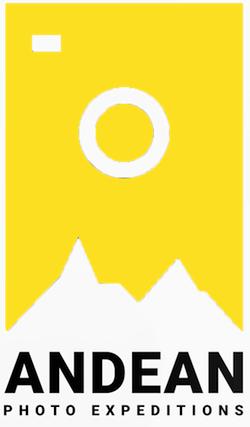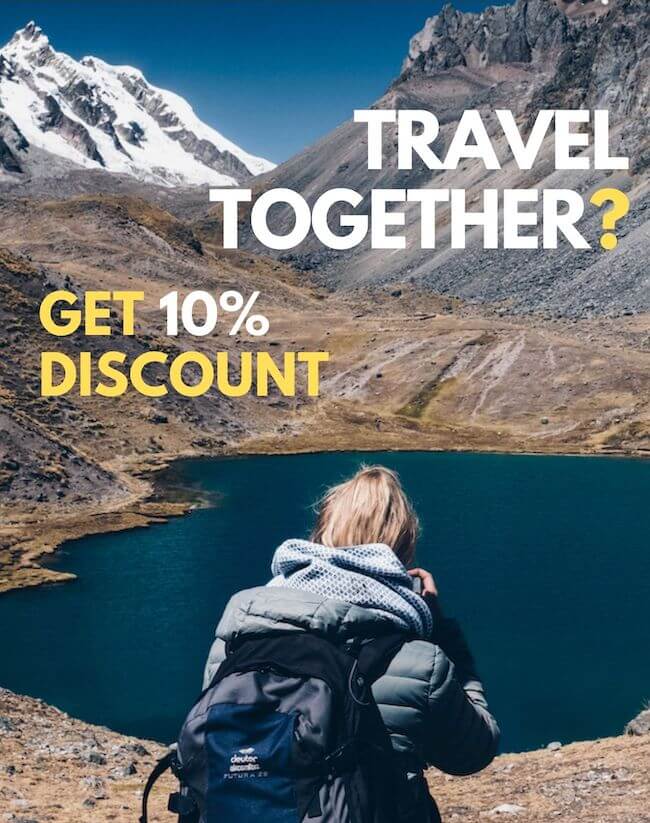Frequently Asked Questions
What visas do I need?
You can travel to Peru easily with nothing more than a passport Upon arrival to Peru, you will receive a tourist visa. This is the case for citizens of the U.S., Canada, the European Union, Australia and New Zealand. The length of your stay will be decided by immigration officials but the maximum amount of time you can stay in the country is 183 days each calendar year.
Peru does not offer visa extensions.You must present a passport valid at the time of entry and have at least one blank page available for the entry stamp. Immigration authorities may also request proof of onward travel.
What vaccinations do I need?
Peru recommends (but does not require proof of) vaccinations for Hepatitis A, B, and Yellow Fever. Yellow fever is particularly recommended for those traveling to jungle areas below 7,500 feet in altitude.
Please also check our COVID-19 Protocols.
When is the best time of year to go to Peru?
Travelers can visit Peru any time of the year.
Dry season runs from May to November and this is typically the time that is most recommended. However, this is also the cooler time of year. Nighttime temperatures can drop to below freezing at the height of the dry season.
June, July and August are the most popular months to visit so you will tend to encounter much larger crowds during
these months.
In the wet season (December to April), you can expect showers three to four afternoons a week. For travelers that don’t mind a little drizzle and muddy trails, this time of year offers smaller crowds and greener hillsides, with wildflowers and orchids often in bloom.
The shoulder seasons, April to June or September to November can often provide the best of both worlds. They typically have fewer crowds and warmer temperatures than the height of the dry season, but still tend to have relatively little rain. For more information, check out our Peru Weather page.
- January to March is the best time to visit the Peru’s coastline
- May is a great month to visit the Cusco Region, just after the rains end
- June to August is the busy season for tourism in Cusco and the Sacred
Valley - September to November is the best time to visit the Amazon and see
wildlife - November also brings the best surfing (though waves are good year-round)
What's the currency and exchange rate? Can I use U.S. dollars? Are there ATMs readily available?
The Peruvian unit of currency is the sol. At the time of writing, it was trading 3.50 Peruvian soles to the dollar. Unlike Ecuador, most businesses in Peru are unlikely to accept dollars as forms of payment (although some may). Because of Peru’s status as a major tourism destination, ATMs are ubiquitous. Combine that with the universal standard of EMV smart-chip credit cards, and withdrawing cash and making purchases by card is easy and safe.
Is Peru a good family destination?
Yes! Peru is suitable for both kids and adults.
There are lots of family-friendly activities to enjoy, from visiting llama farms to sandboarding and kayaking, and from learning to build with adobe materials to cooking in clay ovens and making chocolate.
What type of electric adapter/converter should I bring?
Peru uses 220 volts, but typically plugs are shaped the same as in North America—two flat prongs. So you won’t need an adapter, but if your appliances run at 110 volts (likely, but always doublecheck), you’ll need to bring a converter to avoid frying the device.
Should I spend time in Lima?
Absolutely. Most flights to Peru land at Jorge Chávez International Airport, which is the region’s principal air hub. So you’d only be cheating yourself if you didn’t explore this fascinating capital city. Like many cities and towns in Latin America, Lima boasts a Centro Historico (historic center) rich in colonial history. In fact, for many a century it was the principal seat of Spanish colonial power in the New World. Today the Centro Historico is a UNESCO World Heritage Site featuring breathtaking architecture as seen around the Plaza Mayor. Here you’ll find the Government Palace, Convento de San Francisco, the Archbishop’s Palace, and more.
Can I get to Machu Picchu without trekking?
You most certainly can. The first and most common method of getting to Macchu Picchu from Cusco is to take a train. Unfortunately, the trains don’t leave from within the city itself, so you will have to travel by car or bus to the terminal. Most people depart from the train station in Ollantaytambo, in Peru’s Sacred Valley, a couple hours northwest of Cusco. You can also take the train from the town of Poroy, located about 25 minutes outside of Cusco.
There are two train companies offering services to Aguas Calientes, the town closest to Machu Picchu. These are Peru Rail and Inca Rail. Each offers a wide variety of standard and deluxe transport options. You can choose to ride in simple coach class or pamper yourself with first-class or even private carriage services. These often include champagne, tasting menus, large plush seats, and even live music. You can also count on wider panoramic windows that offer 360-degree views of Peru’s stunning countryside.
Do I need to acclimatize to Cusco's altitude?
Cusco’s thin air has a notorious reputation—after all, the city sits at nearly 11,000 feet altitude. Even so, we’re not talking about Mount Everest here; you will survive. There are also precautions to take ahead of time to mitigate the effects of the altitude sickness that plagues many first-timers (and even repeat visitors) to the region.
For starters, don’t overdo it. For the first couple days of your stay keep your walking tours to a minimum—just around the main sites in central Cusco. Also, the city is hilly, so try not to wander up and down all those steep roads for hours on end. Equally important is to make sure you drink plenty of water.
Finally, trust in that most time-tested of Inca remedies for treating altitude sickness: coca. You can buy bags of dried coca leaves or drink mate de coca (coca leaf tea), which they sell in most cafes and bars. You can also chew the leaves like tobacco. (Rest easy in the knowledge that, in its unrefined form, the coca leaf is not a drug. Chewing or sipping it will only give you the energy of a couple shots of stiff espresso while making your mouth a tad numbs.) It does a great job of keeping altitude sickness at bay, which is likely why it earned the stamp of approval from the Incas.
Are meals included?
We have tried to balance flexibility and convenience regarding meal options. For this reason, we include meals on any of our tour days when you are traveling off the beaten path where restaurant choices are limited.
For example, tours visiting Lake Titicaca and the Amazon will have meals included on these days. In the major cities, where there are a wide variety of restaurants, we generally do not include meals, to allow our travelers the flexibility of choosing their own food preferences.
Your tour leader can always recommend some great restaurant options and will usually offer to join any group members who would like to go out to eat together. Your hotel will also provide a light continental breakfast on these days.
How far in advance should I book?
You can book your Peru tour at any time and generally the earlier you book, the better. Booking early (4 months or more recommended) is especially important for travelers visiting during the height of the dry season, June to August, as many of these departures fill up months in advance. Travelers visiting outside of these busy months can often book a bit more last minute, though 2-3 months’ notice is still recommended.
Further, we usually recommend that you wait to book your international flights until after your tour is confirmed. The sooner that we arrange your tour, the sooner that you can take advantage of flight deals as they become available.
We are often able to accommodate last minute travelers as well (some even departing in less than one week!!), so give us a call and we will do our best! For last minute bookings, it helps to be flexible and organized. Your first choice Amazon lodge may not be available for your selected dates, but your trip coordinator can recommend some other similar options that would be equally interesting! Since Peruvian airlines usually require a passport number to book internal flights, have this number ready to speed up the booking process.
For the Day Tours, last minute bookings are usually not an issue.
Is the water safe to drink?
The tap water is generally not safe to drink in Peru. Bottled water is readily available at tourist sites, hotels, and restaurants. Don’t forget to use bottled water when brushing your teeth as well! Ice is not always made with boiled/ bottled water. Order your beverages without ice (“sin hielo”) or ask your tour leader if the ice is safe in a particular restaurant.
Is it safe to travel to Peru?
Yes! Peru has a level 2 safety rating from the US Department of State (the same rating given to the UK and France). That means it’s a safe destination for families, backpackers, and solo travelers alike. Just take standard travel safety precautions and you’ll be fine.
I am not into Photography, are those tours for me?
Our Tours are also a good fit for non-photographers, we’ve had a lot of groups like that, and it has always been a pleasure for them.
Because our tours take you to places that usual tours don’t, you will be able to visit exclusive places and our guides are used to guide non-photography tours. And your guide can help you taking gorgeous pictures with your smartphone,
and even pictures of yourself.
What Photography Equipment Should I Bring?
The truth is you can bring whatever you like, even no camera at all! Our tours aren’t only for professional photographers, we believe anyone can get enjoyment and learn something from one of our experiences, so whether you are using a top line DSLR or simply taking photos on your phone, you are always welcome to book onto a tour with us.
For those professionals looking to bring gear, your favorite lenses should do the trick – our guides usually carry a 24-70 as a versatile go-to lens, if landscape and astro is your aim, think wide angle or if you plan on one of our wildlife focused tours then bring your long lens!
Our guides will be happy to share their material as well as their tripods.




